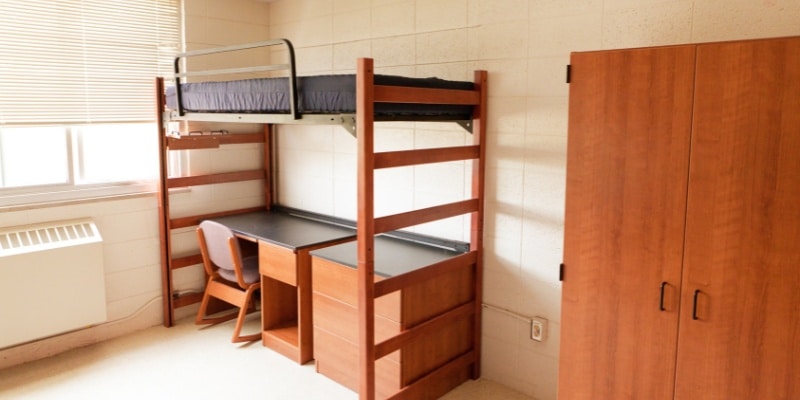Moving into a dorm can be both an exciting milestone and an overwhelming responsibility. Creating an ideal living environment can add to the responsibility. An important element of that comfort is having an optimally functioning heating, ventilation and air conditioning (HVAC) system in place. Subpar HVACs can cause discomfort as well as health concerns and increased energy bills.
It is crucial to recognize signs of malfunction before moving in. This guide provides an overview of what to look out for so that you make an informed decision when selecting your dormitory space.
Understanding Basic HVAC Operation
HVAC (Heating, Ventilation, and Air Conditioning) systems are intricate systems designed to create indoor comfort. At its core, HVAC units control temperature and air quality. While custom essays require meticulous crafting for coherence, HVAC units require regular maintenance checks to ensure optimal performance.
This ensures all system components function seamlessly to maintain desired temperatures while providing clean filtered air. Neglecting this essential upkeep could lead to inefficiencies, higher costs, and decreased indoor air quality.
Visual Inspection
An HVAC system’s physical condition is an invaluable indicator of its health. To inspect properly, look out for signs of rust which indicate age or moisture exposure. Additionally, if equipment appears outdated or shows significant damage, it could indicate it has been neglected and has exceeded its lifespan.
Unusual noises can also be telling. An optimally functioning HVAC system should run fairly quietly. If you hear any rattling, buzzing, or whirring sounds coming from within it this could indicate loose components or potential internal problems within it.
At last, direct your attention towards the vents. Vents clogged with dust or debris or visibly dirty can mess with the system’s efficiency. Clean and unblocked vents are essential as they ensure smooth airflow, directly impacting system efficiency as well as the quality of air you breathe in.
Operational Checks
Temperature irregularities are one of the hallmarks of HVAC malfunction. Just as students seek the best dissertation writing services for consistent results, an HVAC should consistently heat and cool areas as required. If there are significant discrepancies between set room temperatures and the actual ones, there may be an issue.
Noticing any unusual odors is also key. An efficient HVAC system should produce clean, odorless air. Any detectable scents such as mold, mildew or burnt aroma could indicate internal issues or poor maintenance practices.
Examine the strength and consistency of airflow. An efficient HVAC system should produce a steady stream of air. If it feels weak or inconsistent, this could indicate blockages, failing components, or other operational issues which compromise comfort or health.
Review Energy Bills or Consumption Data
Energy bills or consumption data provide one of the clearest indicators of an HVAC system’s efficiency. If energy consumption seems significantly higher than average, that should serve as a warning sign. Higher energy costs often indicate that your system may be working harder than needed, due to inefficiency or malfunctions.
Comparative energy analysis can also be invaluable. If possible, access energy data from similar rooms or dorms and use them as a benchmark against which your unit’s consumption can be evaluated. This will help establish whether its consumption levels are unusually high.
Monitoring energy consumption patterns closely can help detect any potential issues early. Not only does this approach provide comfort but can lead to substantial savings over time.
Consult with Current Occupants or Maintenance Staff
Engaging with people who have firsthand experience with an HVAC system can yield invaluable insight. Current occupants of a dorm can provide feedback on its overall performance. Inquire as to whether maintenance routines have been kept up with, which may shed light on its efficiency and longevity.
Maintenance staff can also be an invaluable source of knowledge and insights. By asking about past HVAC issues or replacements, it’s easy to assess system reliability. Repeat problems could indicate deeper issues with its operation or that its useful life has come close to expiring.
Direct interaction and consultations can provide the clarity you need to make educated decisions regarding the HVAC system of a dorm building.
Recognizing Signs of Poor Indoor Air Quality

One subtle yet telling sign that an HVAC system has malfunctioned is an overall decline in air quality. If occupants begin experiencing increased allergies or respiratory symptoms, this may be related to pollutants or allergens being circulated by the system. This may mean that the air filters need replacement, or the systems are not purifying the air effectively enough.
Visible indicators can also help alert you to air quality problems. Mold or excessive dust accumulation near vents should raise concern. Mold could indicate improper humidity control while dust accumulation might indicate inadequate filtration systems.
Alertness to these symptoms is vital. Poor indoor air quality has the potential for long-term health repercussions that must be addressed immediately.
Check for Appropriate Certification and Compliance
Verifying that the HVAC system complies with industry standards and regulations is of utmost importance.
A certified system goes through stringent testing to meet specific criteria set forth by industry experts. Ensuring its performance, safety, energy efficiency, and environmental responsibility benchmarks are met is paramount to your health.
Compliance with local or national regulations also shows the system meets quality and environmental benchmarks. This ensures not only your comfort and health are protected but that legal liabilities and potential problems are reduced accordingly.
Conclusion
Prior to embarking on the exciting step of moving into a dorm, proactive HVAC checks cannot be overstated. A fully functional and efficient HVAC system lays the groundwork for a comfortable and healthy dormitory experience.
By being meticulous in your evaluations, you protect yourself from potential inconveniences or health risks in the future. Should any issues arise after move-in, it’s imperative that prompt action be taken quickly to rectify them, ensuring longevity of the system.
In short, a diligent approach toward HVAC assessments and timely communication can make all the difference in creating either an enjoyable dorm experience or not!






